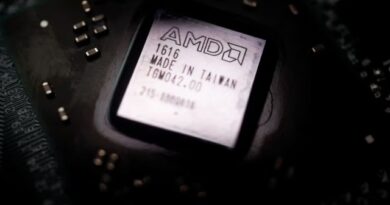China’s Vidu Competes with OpenAI Sora with High-Definition 16-Second AI Video Clips in 1080p
Artificial Intelligence (AI) has revolutionized many industries, and the field of video production is no exception. Generating video content from text prompts has been made possible with AI models such as Vidu and Sora. In this article, we will explore how China’s Vidu competes with OpenAI Sora in producing high-definition 16-second AI video clips in 1080p resolution.
Introduction to Vidu and Sora
China’s Vidu is an advanced AI model developed by ShengShu-AI and Tsinghua University. It was introduced at the 2024 Zhongguancun Forum in Beijing. Vidu utilizes the Universal Vision Transformer (U-ViT) technology, which combines the power of the Transformer and Diffusion AI models.
On the other hand, OpenAI’s Sora is an AI model that creates realistic and imaginative scenes from text instructions. Sora has garnered significant attention for its capability to generate visually appealing video content.
Vidu’s Advancements in AI Video Generation
Vidu’s primary goal is to produce dynamic video content that closely resembles the physical world in terms of detail and realism. This is achieved by integrating Transformer and Diffusion models in the Universal Vision Transformer (U-ViT).
The U-ViT technology allows Vidu to capture intricate facial expressions, complex lighting effects, and other visual elements, resulting in high-definition 16-second AI video clips in 1080p resolution. This advancement sets a new standard for realism and creativity in AI-generated media.
Additionally, Vidu has been designed to incorporate Chinese cultural elements in its generated visuals. Iconic symbols such as pandas and the mythical loong (dragon) are seamlessly integrated, enhancing the resonance with local content creators and audiences. This combination of cutting-edge technology and cultural understanding reflects China’s ambition to lead in AI while preserving its national interests and cultural identity.
Sora’s Contribution to Text-to-Video AI
OpenAI’s Sora has been at the forefront of text-to-video AI models. It utilizes a similar approach to Vidu by generating video content from textual instructions. Sora’s ability to create realistic scenes has captivated many content creators and researchers.
By combining natural language processing with visual understanding, Sora translates text prompts into captivating video clips. With the Sora AI model, content creators can bring their ideas to life without the need for extensive video production resources or skills.
Comparing Vidu and Sora
Both Vidu and Sora are technological marvels that push the boundaries of AI video generation. While they share the same objective of converting text prompts into visually appealing videos, there are notable differences between the two models.
Technological Approach
Vidu embraces the Universal Vision Transformer (U-ViT) technology to achieve its impressive results. This integration of Transformer and Diffusion models allows Vidu to capture fine details and produce highly realistic video clips.
On the other hand, Sora’s technological approach focuses on natural language processing and visual understanding. This approach enables Sora to interpret text prompts and create compelling video scenes that align with the provided instructions.
Cultural Relevance
One area where Vidu excels is cultural relevance. Vidu aims to resonate with local content creators and audiences by incorporating Chinese cultural elements in its generated visuals. This focus on cultural identity sets Vidu apart and reflects China’s aspiration to balance technological advancements with national interests.
While Sora does not specifically emphasize cultural relevance, its ability to generate diverse scenes based on textual instructions allows for a broad range of creative expression. Content creators using Sora can bring their visions to life with remarkable flexibility.
Realism and Detail
Both Vidu and Sora excel in creating realistic video content. Vidu’s U-ViT technology enables it to capture intricate facial expressions, complex lighting effects, and other fine details. This attention to detail contributes to the highly realistic nature of Vidu’s generated videos.
Sora, meanwhile, leverages its natural language processing and visual understanding capabilities to ensure coherence and realism in the generated scenes. While the level of detail may differ slightly from Vidu, Sora offers a more accessible approach for content creators to quickly produce visually appealing videos.
Conclusion
The emergence of AI models like Vidu and Sora has transformed the landscape of video content production. China’s Vidu, with its high-definition 16-second AI video clips in 1080p resolution, competes directly with OpenAI’s Sora in pushing the boundaries of text-to-video AI.
Vidu’s utilization of the Universal Vision Transformer (U-ViT) technology and incorporation of Chinese cultural elements showcase China’s commitment to technological advancement and cultural identity. On the other hand, Sora’s emphasis on natural language processing and visual understanding provides a user-friendly platform for content creators to express their creativity.
As AI continues to evolve, the competition between models like Vidu and Sora will likely drive further innovation, resulting in even more realistic and immersive AI-generated video content.
Explore 3600+ latest AI tools at AI Toolhouse 🚀. Don’t forget to follow us on LinkedIn. Do join our active AI community on Discord.
Read our other blogs on AI Tools 😁
If you like our work, you will love our Newsletter 📰





I needed to thank you for this very good read!! I certainly loved every
little bit of it. I’ve got you bookmarked to check out
new things you post…